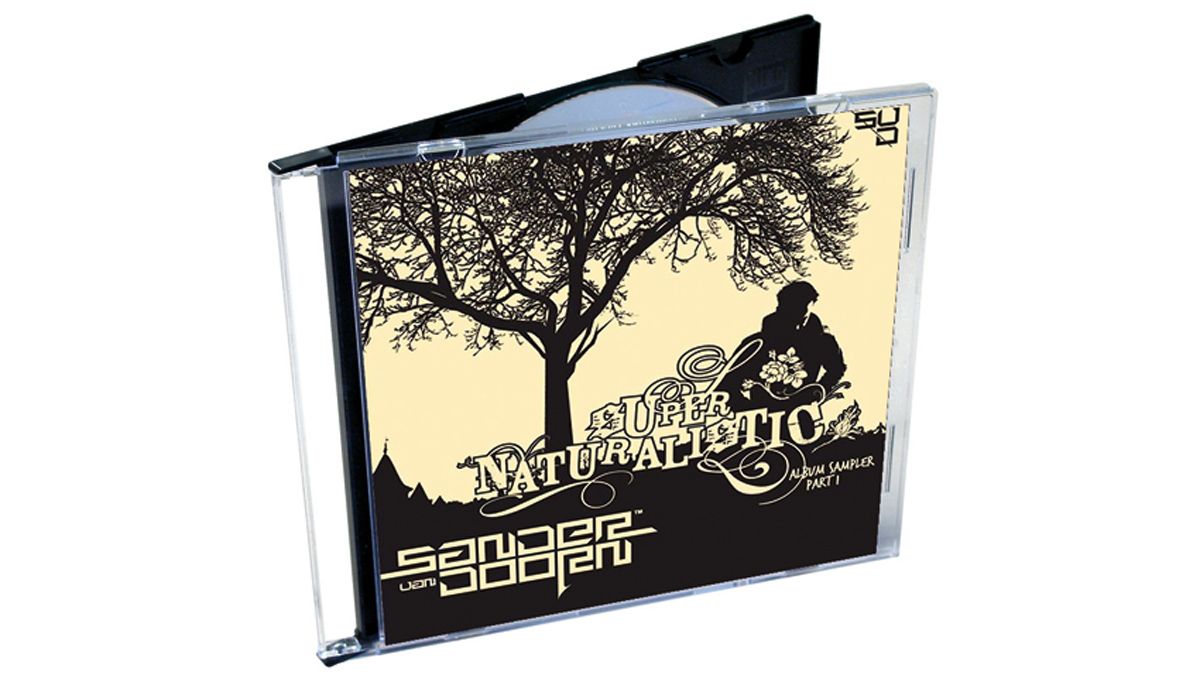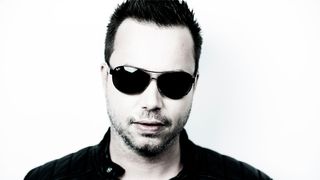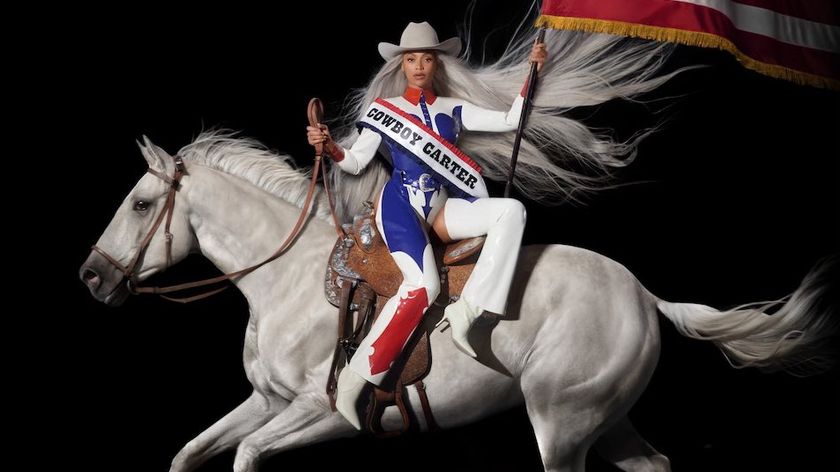Classic album: Sander Van Doorn on Supernaturalistic
The trance legend remembers his genre-mashing debut long-player

In putting together his debut album, trance superstar Sander van Doorn knew he wanted to push himself and the genre. The scene was in danger of becoming stale and predictable. Too many releases followed the same patterns and too many producers coasted along with the same stock sounds.
Over the course of Supernaturalistic, released on his own Doorn Records imprint, the flying Dutchman grabbed trance by the scruff and shook the damn thing up. Techno beats met house chords, moodier textures brought in soul, and rigid tempo templates were ignored in favour of letting the tracks find their own steam, rather than one dictated by the current dancefloor bangers.
“A lot of trance out there at the time had started to use the same formula,” says Doorn. “I wanted to add other genres to the mix, and bring in things like more melodic breakdowns.”
Armed with his Nord Lead 2X, a Virus C, Logic 7 and a little bit of Space Designer, Doorn challenged himself to be surprising, diverse, and do what he felt, not what was expected.
“There were a lot of tracks produced using the same synths, like the Roland JP-8000, and a lot of people were using the same kind of breakdowns, and pretty much the same drops. It needed a little changing up here and there.”
Supernaturalistic tracks such as 15 broke the rules of 16-bar arrangements, while Grasshopper leapt about like its insect namesake. Album opener Look Inside Your Head took its inspiration from alt rockers Pixies, and By Any Demand took its hook from an early ’90s hip-hop club rocker. The rules had gone out the window, and the resulting glorious noise had Doorn hailed as ‘the saviour of trance’.
“I wanted to shake it up,” he says. “I started to bring in more of the techno beats, and moody sounds, and experiment with BPMs. Elsewhere on the album you have tracks that are more laid-back, and others that lean towards techy, or more progressive sounds.
Get the MusicRadar Newsletter
Want all the hottest music and gear news, reviews, deals, features and more, direct to your inbox? Sign up here.
“Through combing all these different types of sounds, I guess I was making trance a little more interesting to listen to at that point. It did get a bit more diverse after that.”
Here, Sander van Doorn takes us track-by-track through Supernaturalistic.

Look inside your head
“It’s been fun to look back at this album. It was made around ten years ago. It was a very important thing to do because it was my first album.
“I was just producing away, and at one point I had a lot of tracks that were just ready to be released. It was quite an amount. I just thought, ‘Why not do an album?’.
“It was fun. When doing an artist album, you can take steps towards different directions, musically.
“Look Inside Your Head was always going to be the first track, though. It actually came into my head when I was listening to a Pixies album. There was this one track, Where Is My Mind?, that inspired me to get in the studio. I changed all the notes and got inspired to make my own version of it. It was a combination of moody vibes and synths, and it came together really quickly. It pretty much produced itself, to be honest, and it just felt right to open the album with.”
Split
“This started as a track that I didn’t know how to finish. I’d already had the main riff sound, but with a lot more notes. It was kind of going through a whole melody, but I couldn’t get the track really going. Sometimes that happens.
“It didn’t have enough drive to make it a fun track. So I simplified everything, and only ended up using two notes of my original melody. It worked, so I repeated that across the track. It ended up creating a lot of energy, which is exactly what I needed for that track so I was very happy with the way it turned out.
“I just added some cool beats and it came together very quickly after that.”
By any demand
“This samples the rapper King Bee. I loved that track [King Bee’s Back By Dope Demand]. I’d always wanted to use that sample. I originally sampled it, and based the whole track around it, but when we went to clear the original track we couldn’t use the original vocals, so I got in contact with MC Pryme from King Bee, who re-recorded it. I took him into the studio and recorded the vocals into my track, which was pretty cool to do.
“It was a really good track for the charts in Holland, as well. It stayed in the commercial charts for three or four weeks, so I was really happy with that. It was one of the first tracks that ever did that.”
15
“For this one, I just had a basic melody going and then I started messing with the arrangement. Normally in dance music a track traditionally has eight bars or 16 bars, but for this track I experimented with removing one bar at the end, so instead of 16 bars I now had 15 bars. I don’t think anybody had done that before so I thought I’d try it out. So that’s where the title comes from.
“I used to record under the alias Purple Haze, for making tracks with a more melodic flow. This track was very much in that vibe, as well.”
Pura Vida
“This one has a summer feel to it, for me. I’d actually just came back from a holiday in Costa Rica where they have the motto, or life saying, which was ‘pura vida’, which means ‘pure life’. It’s a way of saying, ‘Everything’s okay’. This track is quite optimistic.
“A lot of this album is dark, but there are flashes of light. I normally start a track with an optimistic tone, but it always turns out to have a pretty moody melody by the end. They always start positive, though [laughs].”
Sushi
“I was working on this track, and I had this nice House sound going with a really relaxed melody, but it didn’t really have enough drive in it. So I started thinking about this festival called Awakenings, which is one of the bigger Techno festivals in Holland, and I’d just been there a couple of weeks before.
“I just pictured myself stood in one of the fields, listening to the music, thinking, ‘What type of melody do I want to hear now?’. So Sushi started to evolve around my whole feeling of being at that festival.
“I added some moody chords towards the end of the track to give it a bit more speed and it turned out to be a pretty cool experiment.”
I just pictured myself stood in one of the fields, listening to the music, thinking, ‘What type of melody do I want to hear now?’. So Sushi started to evolve around my whole feeling of being at that festival.
The Bass
“It all started with the bassline. I’d been messing with it for a while. I decided to keep the bass at one tone and try and create a real driving track around it. I started producing and got to the breakdown and used this FX sound that really built towards the drop. I was really interested in getting the drop just right so I started digging through my library of old house samples and found this very simple house chord that was just perfect for the drop. It just completed the whole track.”
Lobby
“This was the first track of mine that wasn’t straight-up dance music related. I had the opportunity to explore different moods and speeds, because this was an artist album. With tracks like Lobby I got to make music that wasn’t just like a normal dance music beat.
“So I had that in mind, I started working on this piano sound, and at one point this track came out. It had a little bit more of an ambient sound to it.
“It actually gets used for a lot of documentaries in Holland. I was watching TV the other day and I heard it going round on a really moody and dramatic documentary. It was quite funny.”

Apple
“I had a Faithless track in mind when I was making this called We Come 1 [from 2001’s Outrospective album]. The melody in that song at one point reverses itself and comes back to the start. I really liked that sound and had always wanted to try and incorporate it into one of my tracks, and when I was working on this Apple track I decided to try that reverse technique. For me it created that same kind of Faithless feel.
“Then I added a techy, driven bass that held it all together. After that it clicked into place. This one also works really well on the dancefloor, which is important, too.”
Grasshopper
“This did really well. It was picked up by a lot of the cooler DJs as well back then. It was an experiment. I’d just started working on Logic Pro 7, which had this new effect plugin called Space Designer. You could add some really nice, cool, warm reverb to your melodies.
“I used it in combination with sounds from my Virus C. It helped me take the whole melody to an ultimate climax. Then I just dropped it back to like, nothing, with just a kick and a bassline.
“I was just experimenting with this track. I originally thought about releasing it under a different guise because it didn’t really have that traditional Sander van Doorn sound that people were used to. But, in the end I just thought, ‘This is me. This is my sound’. If I wanted to try something new, I decided I could.
“I called it Grasshopper because it jumps from one part to another [laughs].”
Dozer
“This was a lot of fun to make. I wanted to try and find a different mood for this one. I was just messing around in the studio and this started to come together. I called it Dozer because it reminded me of a bulldozer. It had a really tough rock beat. I used an ‘ahhh’ sounding synth, which kind of took me back to tracks like [New Order’s] Blue Monday, or stuff by The Farm.
“I used that kind of sound and went about trying to build a decent element of suspense around it. Then I added a nice kick drum sound and a really techy kind of bassline over the top. It came together really well. It was definitely one for the rougher types of DJ sets that I’d do.”
Outrospective
“It was a perfect end track for me. It had a more rock feel to it. It wasn’t on a house beat. It built more around a guitar sound. For me it felt like it had a little bit more of a U2 feel to it. It sounded like the perfect ending.
“Oh yeah, If you leave the track playing after it’s ended, there’s a live recording of the end of one of my sets from a gig in Washington, DC. I recorded my set and forgot to turn it off at the end, so the microphone picks up the crowd. I thought it was a funny way to end. Speaking of secret tracks. If you start track one on the album and immediately rewind it you’ll find an extra hidden record called Minus 1!”


Future Music is the number one magazine for today's producers. Packed with technique and technology we'll help you make great new music. All-access artist interviews, in-depth gear reviews, essential production tutorials and much more. Every marvellous monthly edition features reliable reviews of the latest and greatest hardware and software technology and techniques, unparalleled advice, in-depth interviews, sensational free samples and so much more to improve the experience and outcome of your music-making.

"Reggae is more freeform than the blues. But more important, reggae is for everyone": Bob Marley and the Wailers' Catch a Fire, track-by-track

“Part of a beautiful American tradition”: A music theory expert explains the country roots of Beyoncé’s Texas Hold ‘Em, and why it also owes a debt to the blues










